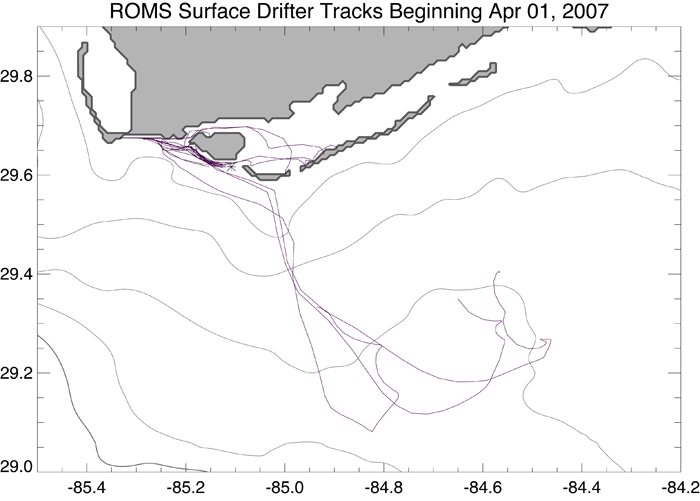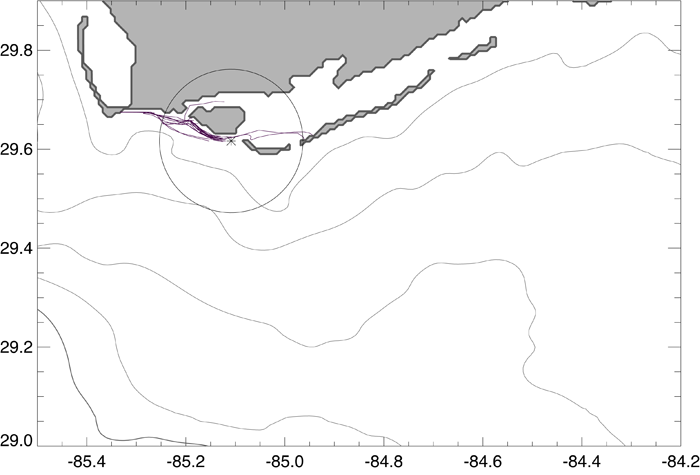Background
In the Spring of 2009, I was a student in a Marine Field Methods course at Florida State University with Dr. Kevin Speer. In this course, we were required to design low-cost drifters for deployment in Apalachicola Bay, FL. This was part of a 4 day cruise in the bay on the R/V Bellows. The following webpage describes this cruise and provides some tools that we used to estimate what potential conditions we may expect during the time at sea. A full report of the cruise may be found here.
Circulation modeling experiments
The movies below show the surface circulation for 15 Mar - 24 Apr 2007, with color-contoured thermodynamic properties (temperature and salinity). Data is output from a ROMS model configured for the northeastern Gulf of Mexico, and does NOT include tides. These movies are intended only as an educational tool for the Marine Field Methods course by Dr. Kevin Speer at FSU during Spring 2009, and are not intended to be used for other purposes.
Circulation with temperature

Circulation with salinity

Simulated particle trajectories
16 particles are seeded every 3 hours over the course of two days, just gulside of West Pass. Then, from the time each particle is seeded, it is followed for 10 days as it is advected around in the surface shelf circulation. The same model configuration as above is used, and this plot shows the trajectories of these each particle. Position data may be downloaded here and is an ascii file with output as (particle, lon, lat):


The figure above demonstrates the same number of particles, but they are only followed for 48 hours each. The circle represents a 10-mile radius from the seeding location in order to simulate an estimate of the line-of-sight of the ship's radar.

Again, the same number of particles, but this time they are only followed for only 24 hours each in the year 2008. Notice the larger distance covered by these particles, although over a shorter time period.
Low-cost drifter design
An example of the low-cost drifter design used for experimentation in Apalachicola Bay